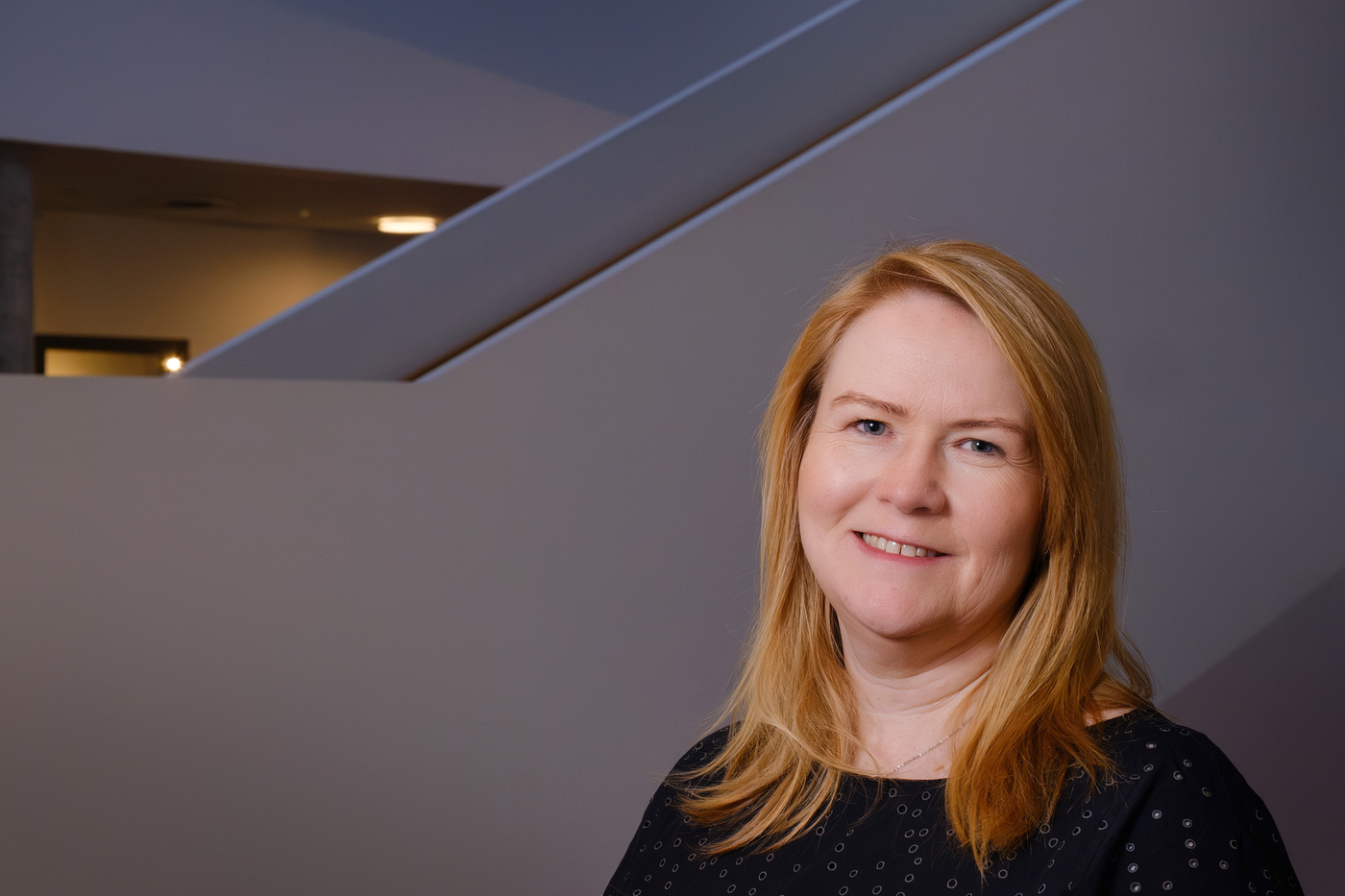"The research focuses on genres of texts and those genres that are written at the upper levels of primary school, secondary school, and university, and the transition from using English as a foreign language to using English as the language of instruction," says Súsanna Björg Vilhjálmsdóttir, a doctoral student in English, who received a grant from Rannís to conduct research on writing at the primary, secondary, and university levels.
Susanna's research is a quantitative study involving the distribution of digital questionnaires for students at the upper levels of primary school, secondary school, and university. Susanna observed when processing the data that English is not only used in English teaching in the upper levels of primary schools, but also in other subjects. When students enter secondary school, the use of English as an instructional language increases, not necessarily in class but in reading materials and text writing.
English predominant in the curriculum among social studies teachers
The first phase of the study is coming to an end which is on the use of English as teaching language in elementary and upper secondary schools. The use of English in teaching has increased considerably and is especially prominent among social studies teachers in upper secondary schools according to Súsanna, and they frequently use study materials in English. The study shows that English is no longer treated as a foreign language and is no longer used as such; instead, it has become firmly integrated into teaching practices and teacher methodologies. English has thus become a teaching language.
Asked about the significance of the research, Súsanna says that it is essential to study the progression in text writing from the upper levels of primary school to university, the teaching language and the teaching methods employed by educators. With extensive knowledge of these factors, the transition from using English as a second language to using it as a teaching language can be made easier for students.
Long-overdue research
Súsanna has an interesting past connected to the study subject. She moved to Iceland from the United States when she was twelve with a vocabulary in Icelandic of a three-year-old according to her. She learned Icelandic by talking and says she could not write well in Icelandic. This was the reason she felt as a foreigner in her own country for a long time.
This changed when Susanna was 28 years old when she took on the role of the president of the Hairdressers' Association and had to, among other things, write legal documents and read wage agreements. This proved difficult for her, but she gradually gained her Icelandic language skills. "So I understand the students' frustration very well," says Súsanna. Furthermore, she points out that when she was learning Icelandic there were few options and opportunities for people like her. Times have changes and many options are now available, which Súsanna welcomes.
Súsanna says that she originally wanted to learn English at a University level but her family encourage her to follow in her mother's and her grandmother's footsteps and learn to be a hairdresser. After having served as the president of the Hairdressers' Association for 13 years, Súsanna decided to follow her dream to learn English. "I missed the English language because English will always be a part of my self-image, just like Icelandic is today," says Súsanna. Writing in English and Icelandic is thus close to her heart.
Súsanna adds that she chose this subject in part as few people have shown interest in it until now. She says teachers at all school levels have welcomed the study. "Finally someone is looking into this is a sentence I hear often," adds Súsanna.
Súsanna's supervisor is Birna Arnbjörnsdóttir, professor emirta at the Faculty of Languages and Cultures.




